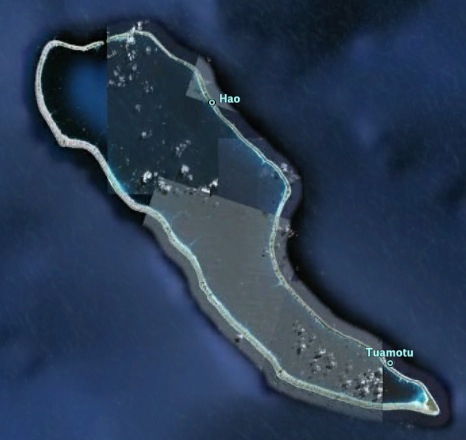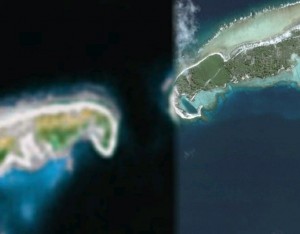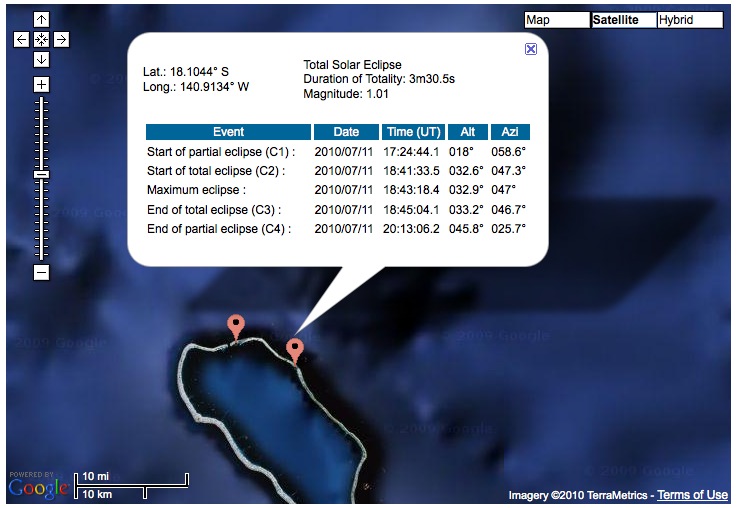Apr 12
Syzygy bound for syzygy: Total solar eclipse July 11, 2010
Get this: Syzygy is going to experience a syzygy.
A ‘syzygy’ is an astronomical event in which three or more celestial bodies are perfectly aligned. A solar eclipse–in which the moon blocks out the sun and shadows the earth–is an example of a syzygy.
There is going to be a total solar eclipse in the south pacific on July 11th of this year.
Solar eclipses come in two flavors, partial and total: during a partial solar eclipse, only a portion of the sun is blocked. The total solar eclipse is the jackpot of all syzygy. It is an extremely rare event, and it is only visible from a very tiny, quickly moving area on the earth for only a very few minutes (on this website, the little black dot illustrates the location of the totality). The total solar eclipse is dramatic, with a full-on biblical feel to it: we’re talking about the moon completely blocking out the sun in the middle of the day, complete darkness, stars in the middle of the day.
Even fewer people will be able to view the total eclipse this july 11th because it barely touches land. The atolls of Hao and Amanu in the Tuamotu Archipelago are on the short list (nasa doesn’t list them on their website because they are nearly uninhabited, nearly impossible to reach, and, being coral atolls, may not even be considered “land”).
We are planning to be there; we intend to treat Syzygy to a syzygy. If that isn’t appropriate, right!?
When I learned of the total solar eclipse, I made a list of all the atolls that were in the path of the totality–we’re going for the real deal here–no partial eclipse for this party. I used this nasa site to determine the precise track of the eclipse, and the time and duration of totality. The list has 19 names on it. Of those 19 atolls, it looks like only two (maybe a few more–more research is necessary) have a pass through which we can enter with our boat. Hao is the current top contender.
This is the atoll “Hao”:
If this is your first glimpse of a coral atoll, you may be reacting with some of the same incredulousness that I did less than a year ago, when I went on google earth to see what we were headed for in the south pacific. An atoll is an island that consists of a coral reef surrounding a lagoon. This thing was once a piece of land sticking up out of the ocean; then a coral reef formed around the land; then the land sank below the surface. The Tuamotu Archipelago consists entirely of atolls (78 of them). No land, all coral, all rings like this, with lagoons in the center. Some of them have “passes”–a place to slip through the reef, into the lagoon. The rest have no pass, i.e. no way to get in, and thus are inaccessible to us.
On the aerial photo of Hao, you can just make out the pass at the very top of the island. It is less than 300 yards wide–imagine trying to take that during a 20 knot current. Here is a closer view (don’t worry, we’re not using this for navigation):
The Tuamotus are widely regarded to pose the most dangerous and difficult navigation in the world. The water rushing into and out of the lagoon can cause 20 knot currents–it is crucial to precisely time your entry and exit during the narrow window of slack water between tides. Once you enter the lagoon, you must navigate an obstacle course of “coral heads”–mounds of razor sharp rock hard coral that rise to within feet of the surface. Some lagoons are blessedly free of the coral heads; others have hundreds of them so densely packed that it is impossible to cross the lagoon. Compounding the navigational hazard, most of these atolls rise no more than a few feet off the horizon, making it frighteningly easy to accidentally run into them. There are a number of these atolls that are completely submerged, with no visible land, lurking just under the water–you couldn’t have designed a better booby trap for a sailboat.
According to Nasa, if we end up just off the beach of the town of Otepa on the atoll Hao, we will experience 3 minutes and 30 seconds of total eclipse, starting at 18:41 UTC (which will be 8:41 AM for us, 5:41 pm on the west coast, 2:41 pm on the east coast).



April 13th, 2010 at 5:43 pm
July 11th is my Birthday!! that is awesome, I wish I could be in the South Pacific to see it. Good Luck on your voyage across the Pacific I will be thinking of you often and checking the this site to see when you arrive in the marquesas.
April 13th, 2010 at 7:03 pm
thanks wayne, it’s cool to see that you’re following. I’ll take some video–though it might by anticlimactic in the dark! later cousin, matt